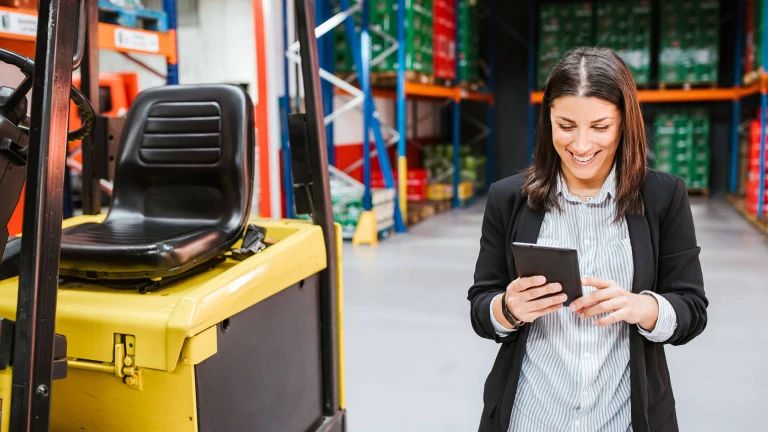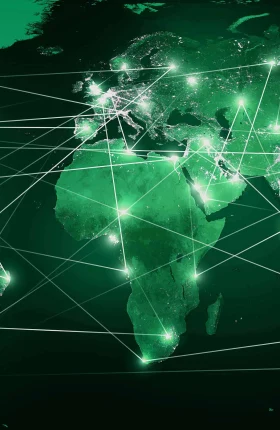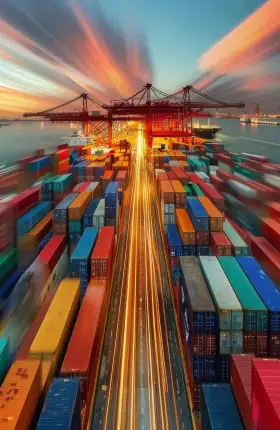Sending and receiving goods across borders is becoming so complex—and the penalties for missteps so steep—that risk management in trade increasingly demands attention from the C-suite.
The time when large global companies could take an ad hoc approach to supervising the massive volumes of goods they ship and receive around the world is over. In the past few years, trade compliance has become enormously complex—and a significant source of corporate risk . In addition, CEOs need more expertise on how to navigate mounting geopolitical hazards and make their supply chains more resilient.
The role of risk management in trading, therefore, needs to change rapidly. And it should command greater attention from top management.
Many companies with large import and export footprints should consider having this function led by a senior executive—a “chief trade officer”—who reports directly to the C-suite. This executive should be involved in a wide range of strategic issues. He or she should be able to anticipate geopolitical shifts that could impact the business and help avert trade risks. The chief trade officer should also enable the organization to reduce costs and conduct scenario planning in order to seize any competitive opportunities created by changes in trade patterns and the global environment.
Creating such a senior trade compliance officer role would be a historical departure for most companies. Trade risk management typically has been a midlevel function tucked away somewhere in operations, sometimes only as an afterthought. The trade compliance organization often reports to a manager in sales, accounting, legal, procurement, or logistics who has little regulatory expertise. Coordination, training, budgets, and access to top decision makers have tended to be minimal.
That approach may have made sense when the world was moving toward a system of universally accepted trade rules primarily arbitrated by a single body, the World Trade Organization. But the golden era of globalization is no more.
The Rising Risks of Global Trade
Companies that trade goods must navigate an ever-expanding labyrinth of bilateral and regional trade arrangements, environmental regulations, sanctions, unilaterally imposed tariffs, and export controls on technology and products. Increasingly, companies are held accountable for the carbon footprints of their entire global supply chains and must certify to customs authorities that their products are free of forced labor and sensitive or “conflict” minerals.
For companies making thousands of cross-border shipment transactions daily, the challenge of complying with regulatory changes on so many dimensions is daunting and requires the processing of massive amounts of data. But those able to master the new rules of international trade and quickly adapt their trade compliance strategy can gain valuable strategic and competitive advantage.
With this growing complexity comes greater risk. In the absence of effective control mechanisms and expertise, liabilities can rapidly accrue and be challenging to quantify. Poorly functioning risk management in trading can drive up tariffs and administrative costs and cause goods to be stopped at the border. It can also result in lengthy and costly litigation, huge fines, and even prison terms for executives.
Those able to master the new rules of international trade and quickly adapt their trade compliance strategy can gain valuable strategic and competitive advantage.
A few examples: A Chinese telecom equipment company was ordered to pay $1.2 billion for violating US sanctions on supplying telecommunications equipment to Iran and North Korea. The subsidiary of a sensor technology company in South Korea faced a $12 million charge for retroactive duties because of faulty customs transfer pricing. A major software company paid $33 million to the US Department of Justice and Bureau of Industry and Security to settle a violation disclosure regarding inadequate pre- and post-acquisition due diligence that allowed illegal exports of thousands of its products via front companies.
Navigating New Tariff Regimes and Regulations
The proliferation of regional and bilateral trade pacts is a good illustration of growing complexity. For example, 11 Asian and Latin American nations negotiated the Comprehensive and Progressive Agreement for Trans-Pacific Partnership, a successor to a pact that the US abandoned. Fifteen Asia-Pacific nations belong to the Regional Comprehensive Economic Partnership, which went into effect in January 2022. The US is currently promoting a new regional pact called the Indo-Pacific Economic Framework. It also has numerous bilateral agreements, including with Australia, Jordan, Singapore, and El Salvador, to name a few, as well as the recent United States–Mexico–Canada Agreement.
Understanding the nuances of these agreements is critical. Companies that misinterpret a free-trade pact could later find that, far from saving money, they instead have accrued liability for many years of retroactive duties and must pay steep fines for regulatory violations. Meanwhile, although the World Trade Organization remains very influential, its role in arbitrating trade disputes has diminished.
In addition to mastering many different tariff regimes, companies must comply with complicated new environmental and social regulations on the goods they manufacture and procure. This will require them to establish systems for tracing goods shipped within their supply chains. Starting in 2023, for example, the EU will begin implementing the Carbon Border Adjustment Mechanism. Eventually, companies will have to document, report, and pay a carbon tax on the greenhouse gas emissions associated with any goods they bring into the EU—including those of their global suppliers. The US and other countries are considering similar cross-border legislation.
Companies are also increasingly required to comply with regulations unrelated to traditional trade compliance issues that have instead been triggered by geopolitical tensions. For example, the US Uyghur Forced Labor Prevention Act, passed in December 2021, bars the importation of goods suspected of being manufactured wholly or in part in the Xinjiang Uygur Autonomous Region. The European Commission is preparing similar legislation that will require companies to provide verified documentation on the workforces involved in making the goods they import along their entire supply chain, from the largest OEMs to their tier 1, 2, and 3 suppliers.
The Hazards of Proliferating Sanctions
The surge in economic sanctions since Russia’s invasion of Ukraine is elevating trade risk on CEOs’ agendas. As of August 2022, allied countries had placed nearly 7,000 sanctions on Russian and Belarusian individuals, companies, and institutions. At the time of this publication, countries continue to enact more sanctions while Russia takes countermeasures. These, of course, come on top of sanctions already placed on nations such as Iran, Sudan, and North Korea that can also be directed at front companies in nations as diverse as Turkey, Germany, the United Arab Emirates, and Malaysia.
In addition to mastering many different tariff regimes, companies must comply with complicated new environmental and social regulations on the goods they manufacture and procure.
The penalties for evading sanctions are severe. In the US, for example, violators can be fined up to $1 million per incident and face 20 years in prison. In March 2022, the Departments of Justice and the Treasury, in cooperation with enforcement agencies of Western allies, launched Task Force KleptoCapture to enforce sanctions.
The consequences for violating technology export controls are just as onerous. In addition to risking hefty fines and potential prison terms, violators of US national-security regulations requiring licenses to export “dual use” goods can lose their export privileges and be ordered to submit to continuous on-site monitoring by an independent government-approved overseer at their own expense. For example, one US manufacturer that exported high-tech composite materials without the required export licenses lost approximately 40% of its revenue overnight when the government revoked its right to export for ten years.
What the Chief Trade Officer Role Would Encompass
To mitigate these mounting hazards—and take full advantage of new opportunities created by policy changes—risk management in trading must focus on more than the traditional export and import declarations and troubleshooting. Under the broad leadership of the chief trade officer, the function should fulfill an elevated, strategic role that will help the organization gain competitive advantage.
This senior trade compliance officer’s team must work seamlessly across functions, including legal, human resources, accounting, supply chain management, R&D, logistics, and communications. It must implement systems to collect, share, and analyze vast amounts of trade-related data. The trade compliance function should be an integral part of M&A activity, assessing the trade and geopolitical risks of targets and helping to integrate acquisitions. It must build goodwill with trade-related regulatory and enforcement agencies.
The senior trade compliance officer must build a best-in-class trade organization and be skilled at change management. In addition, trade activities must support the achievement of environmental, sustainability, and governance goals and adherence to ethical codes.
Creating a high-level trade officer position and a world-class trade compliance function is a serious investment. But for companies of a certain scale with large volumes of trade in many countries—especially those that present a high material risk—it will more than pay for itself through penalties and costs avoided and opportunities gained through the ability to anticipate change and move proactively. With the right systems, processes, and strong, high-level leadership, trade compliance can be transformed from an ad hoc function to a source of strategic advantage.









